Study notes on principles of computer composition
Principles of computer composition
1. Brief history of computer development
1.1 four stages of computer development
1946-1957 Stage I electronic tube computer -World War II was the catalyst for the production of electron tube computers -The world's first electronic tube computer was produced by Britain to unlock the ciphertext of the German Navy -The most famous electron tube computer at this stage(ENIAC)ENIAC -Summarize the characteristics of electronic tube computer in the first stage: -Low integration and large space occupation -High power consumption and slow running speed (compared with current computers) -The operation is complex, and the replacement procedure needs to be rewired 1957-1964 Second stage transistor computer -Three scientists at Bell Labs invented the transistor -The world's first transistor computer TX-0 Born in MIT(Lincoln Laboratory, Massachusetts Institute of Technology -Summarize the characteristics of transistor computer in the second stage: -The degree of integration is relatively high and the space occupation is relatively small -The power consumption is relatively low and the operation speed is fast -The operation is relatively simple and the interaction is more convenient (such as: PDP-1 (with display) 1964-1980 Phase III integrated circuit computer -Engineers at Texas Instruments invented the integrated circuit( IC) -IBM(International Business Machines Corporation or universal Business Machines Corporation) launched compatible products System/360(Prototype of operating system) -Summarize the characteristics of integrated circuit computer in the third stage: -Computers become smaller -Power consumption becomes lower -Computers become faster 1980-Now the fourth stage is VLSI computer -CPU Is one of the products of VLSI -Representative: Steve Jobs -Summarize the characteristics of VLSI computer in the fourth stage: -A chip integrates millions of transistors -Faster, smaller, cheaper and more acceptable to the public -Richer uses: text processing, table processing, highly interactive games and applications

Imagination of the future computer
Biological computer -Small size and high efficiency -Not easy to damage, biological level automatic repair -No signal interference and no heat loss quantum computer -Physical computer following quantum mechanics
1.2 history of Microcomputer Development
The development of microcomputer began from the stage of integrated circuit. The development of microcomputer is mainly limited by its performance. -Mononuclear CPU -(1971-1973)500KHz Frequency microcomputer (word length 8 bits) -(1973-1978)Above 1 MHz Frequency microcomputer (word length 8 bits) -(1978-1985)500MHz Frequency microcomputer (word length 16 bits) -(1985-2000)Above 1 GHz Frequency microcomputer (word length 32 bits) -(2000-Now) higher than 2 GHz Frequency microcomputer (word length 64 bits) CPU There is a famous law of performance: Moore's law -When the price remains unchanged, the performance of the integrated circuit is every 18-24 It will double in a month -Multicore CPU -(2005)Intel Pentium Series Dual Core CPU,AMD Speed dragon series -(2006)Intel Core quad core CPU - Intel Core series 16 core CPU - Intel Xeon series 56 core CPU
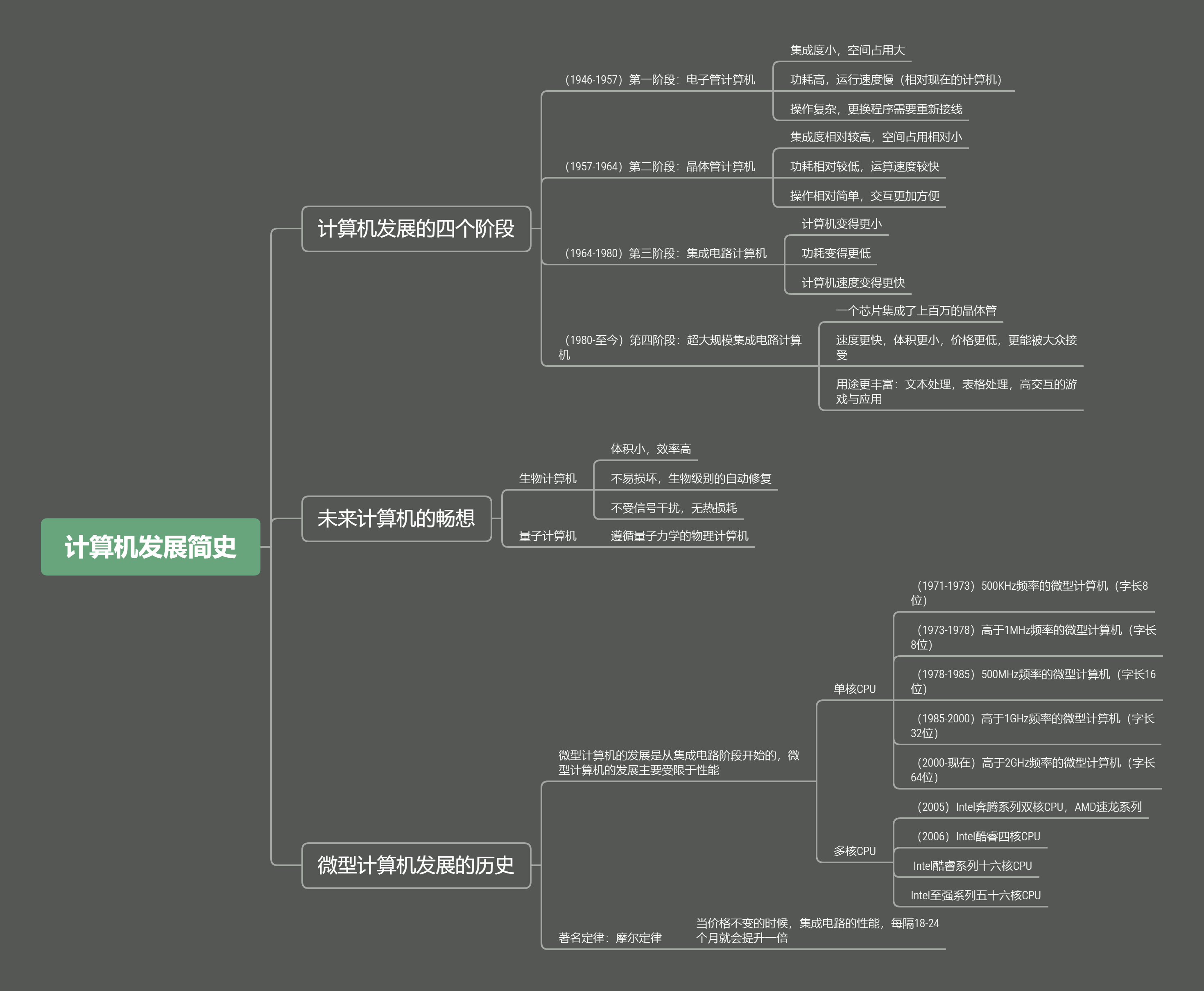
2. Classification of computers
Supercomputer -The computer with the strongest function, the fastest operation speed and the largest storage capacity -It is mainly used in national high-tech fields and cutting-edge technology research -The unit that expresses the computing speed of a supercomputer is TFlop/s -1TFlop/s = One trillion floating point calculations per second Mainframe computer -Also known as mainframe, mainframe, mainframe, etc -It has high performance and can handle a large number of data and complex operations -In the mainframe market, IBM Occupy a large share Mini computer (server) -Also known as minicomputer, ordinary server -No special air-conditioned places are required -It has good computing power and can complete more complex operations workstation -A high-end general-purpose microcomputer that provides more powerful performance than a personal computer -Similar to ordinary desktop computers, it has large volume but strong performance Microcomputer -Also known as personal computer, it is the most common type of computer -Although sparrows are small, they have all kinds of internal organs
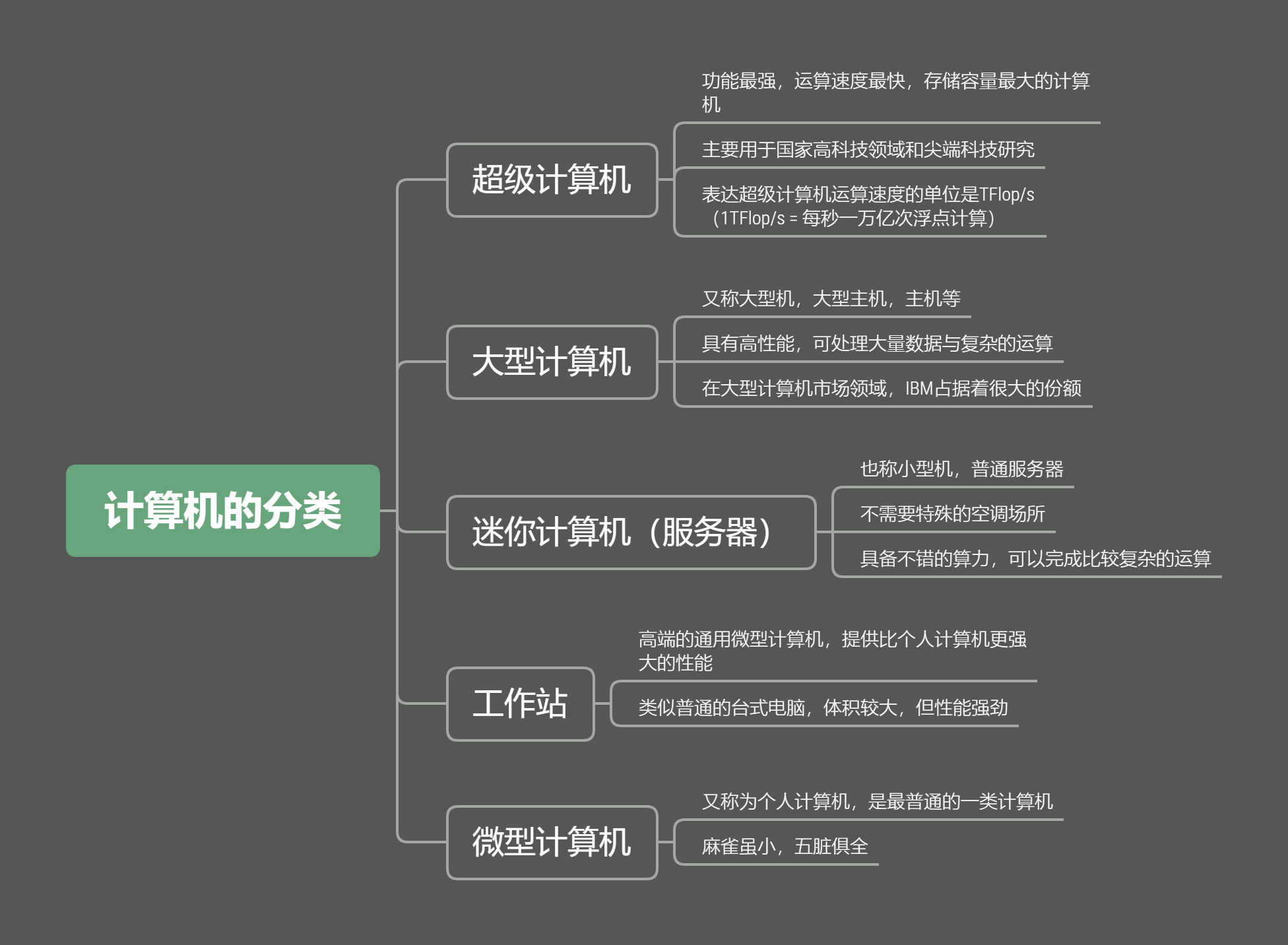
3. Computer architecture
3.1 von Neumann system
-
A computer design conceptual structure that stores program instructions and data together
-
be born
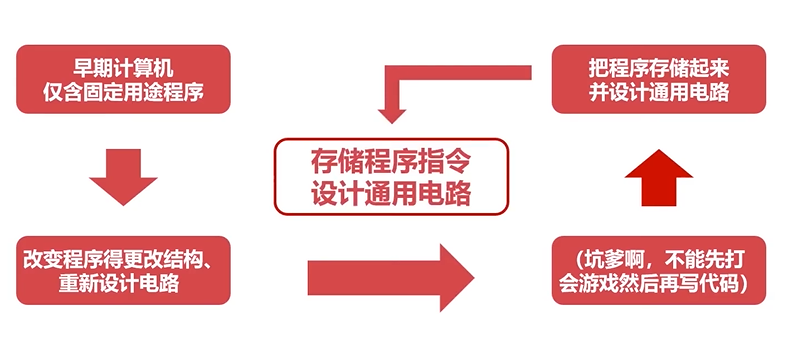
Important components of von Neumann system: -Memory: stores data and programs -Arithmetic unit: arithmetic operation, logic operation -Controller: command program operation -Input device: converts information into a form that can be recognized by the machine -Output device: converts the result into a familiar form Functions to be completed by the computer guided by von Neumann system: -Be able to send the required programs and data to the computer (input device) -The ability to remember programs, data, intermediate results and final operation results for a long time (memory) -Capable of data processing such as arithmetic, logic operation and data transmission (arithmetic unit, controller) -Be able to output the processing results to the user (output device) as required Von Neumann architecture centers on arithmetic unit
-
Structure diagram of von Neumann system computer
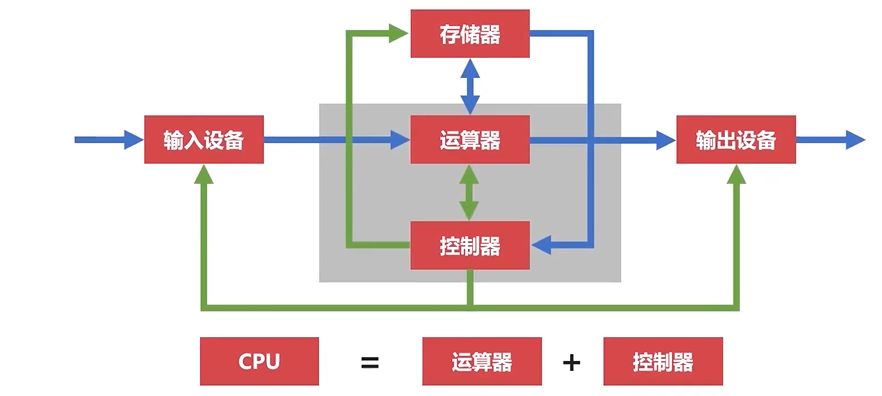
-
The bottleneck of von Neumann system computer
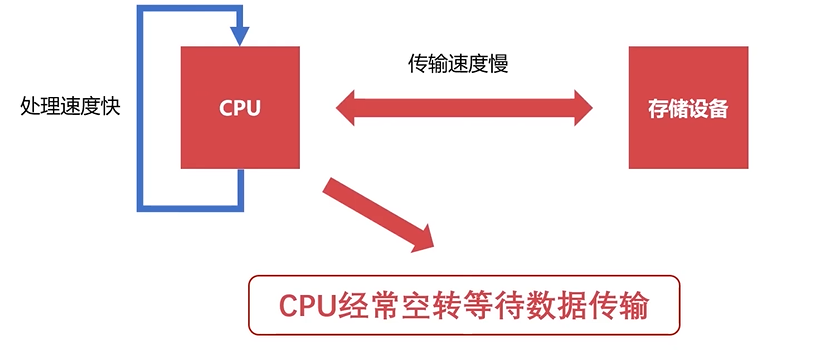
3.2 structure of modern computer
Modern computers are modified on the basis of von Neumann architecture -Mainly to solve CPU Performance differences with storage devices -Modern computer can be understood as a structure with memory as the core
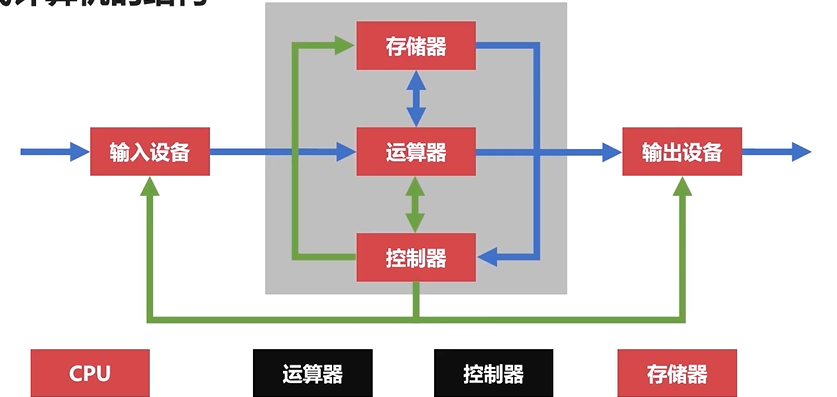
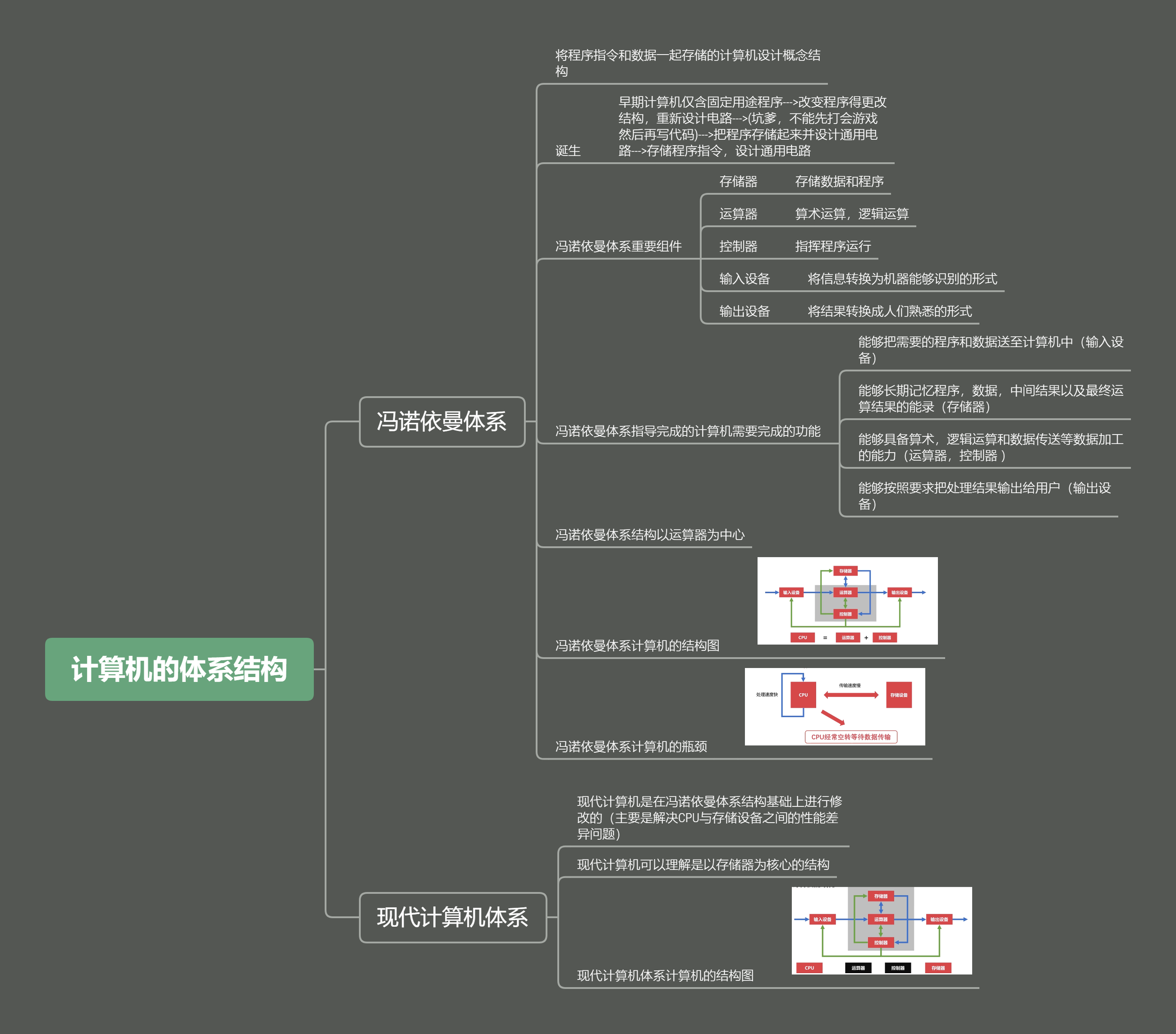
4. Computer hierarchy and programming language
4.1 procedure translation and interpretation
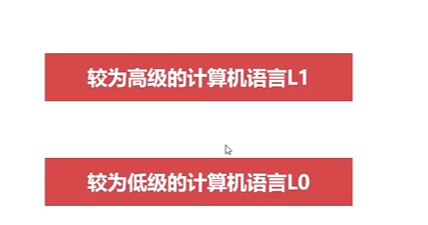
-
Program translation
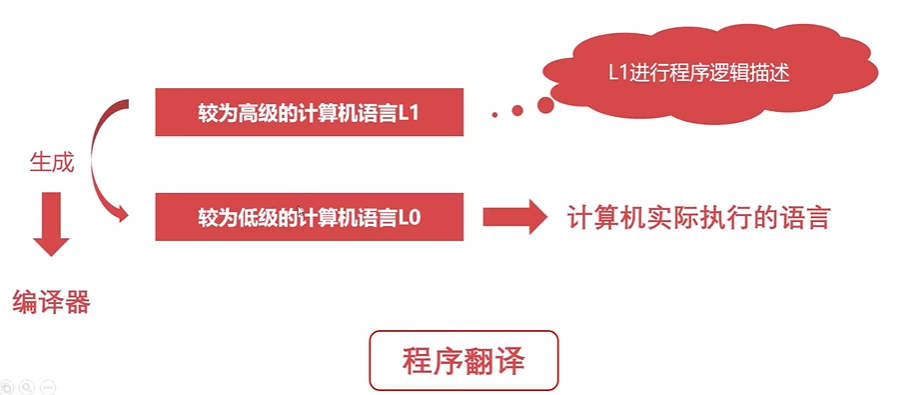
Through the compiler L1 Programs written in high-level languages become the language actually executed by computers L0
-
Program interpretation
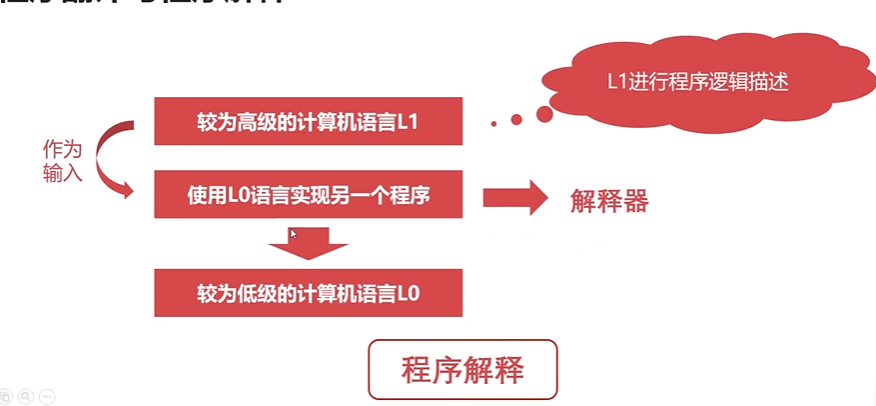
Is through L0 Write an interpreter program in this low-level language L1 The program written in high-level language is used as the input of interpreter program, and it is transformed into low-level language sentence by sentence L0
4.2 computer hierarchy and programming language
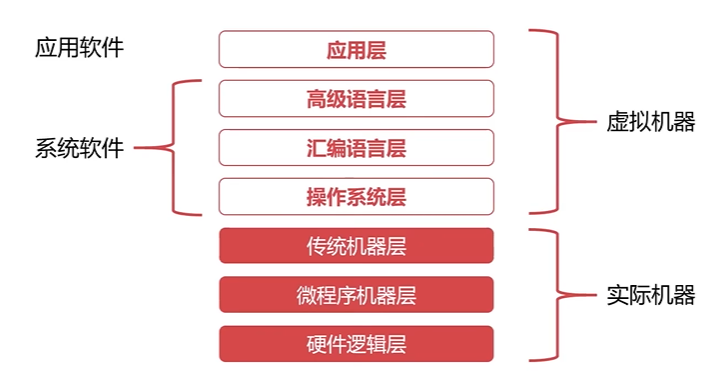
5. Calculation unit of computer
-
capacity unit

-
Speed unit
- Network speed
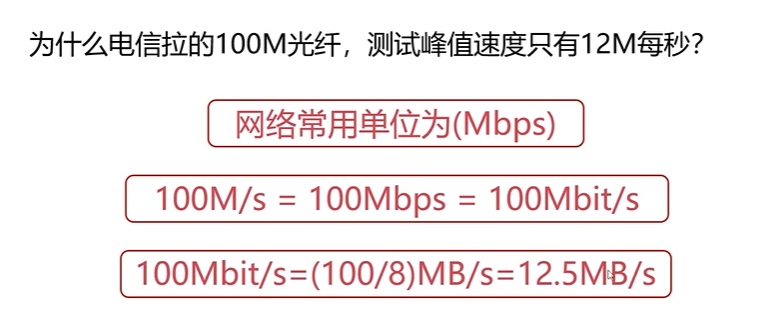
- CPU speed
- The speed of CPU is generally reflected in the clock frequency of CPU
- The unit of clock frequency of CPU is generally Hz
- The clock frequency of mainstream CPU s is above 2GHz
- Hz is actually one second, which is the measurement of the number of periodic changes and repetitions per second
6. Computer character and code set
6.1 history of character encoding set
- ASCII code
- Seven bits can be used to fully represent ASCII code
- Contains 95 printable characters
- 33 non printable characters (including control characters)
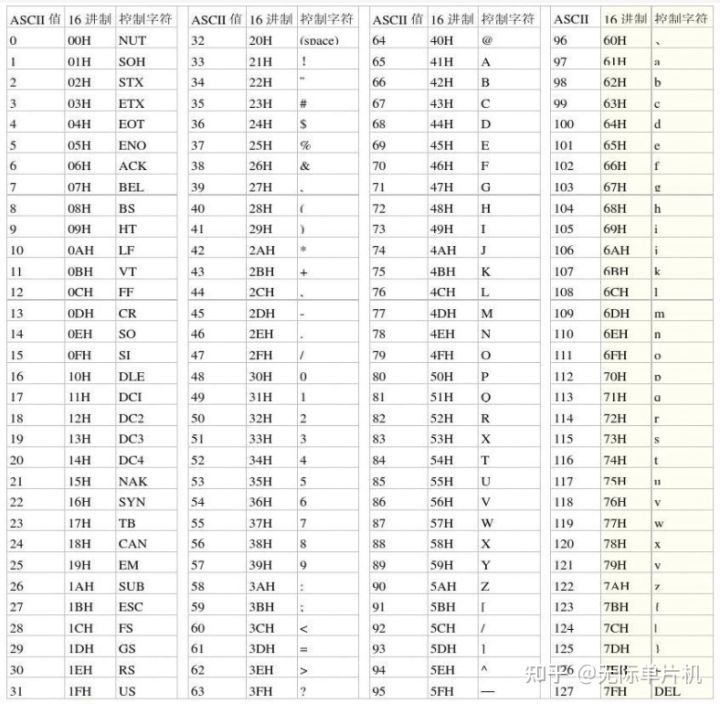
-
Extended ASCII code
- Change the original 7 bits into 8 bits
- Common mathematical operators
- European character with phonetic symbol
- Other common symbols, table symbols, etc
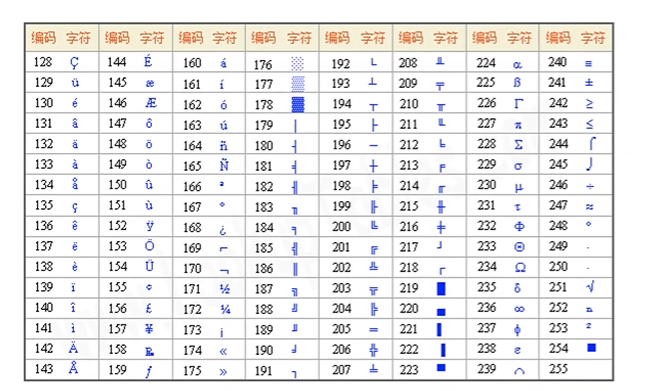
-
Internationalization of character encoding sets
- Linguistic diversity in Europe, Central Asia, East Asia and Latin America
- The language system is different, and the language is not combined with limited characters
- China, South Korea, Japan and other languages are the most complex
6.2 Chinese code set
- GB2312 (Chinese character coded character set for information interchange - Basic Set)
- A total of 7445 characters (including 6763 Chinese characters and 682 other symbols) are included
- GBK (Chinese character internal code extension specification)
- Downward compatibility with GB2312 and upward support for international ISO standards
- It contains 21003 Chinese characters and supports all Chinese, Japanese and Korean characters
- Unicode (unified code, universal code, single code)
- The universal symbol set is defined, and UTF - * realizes coding
- UTF-8 encodes Unicode in bytes